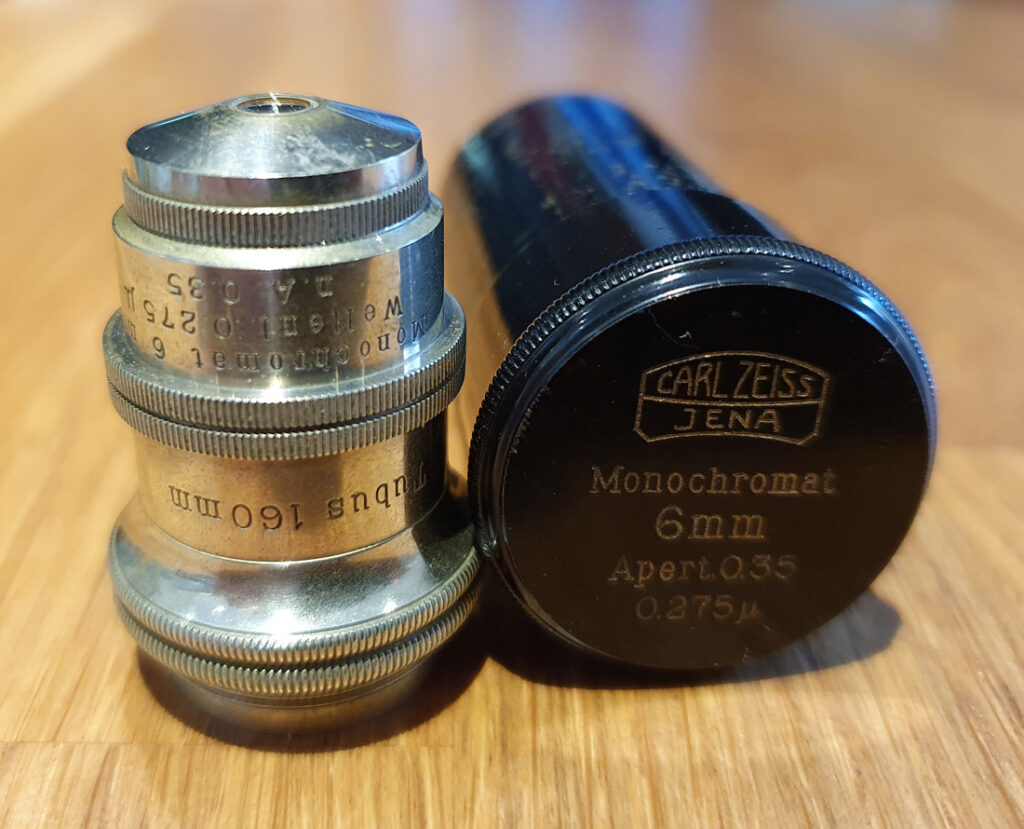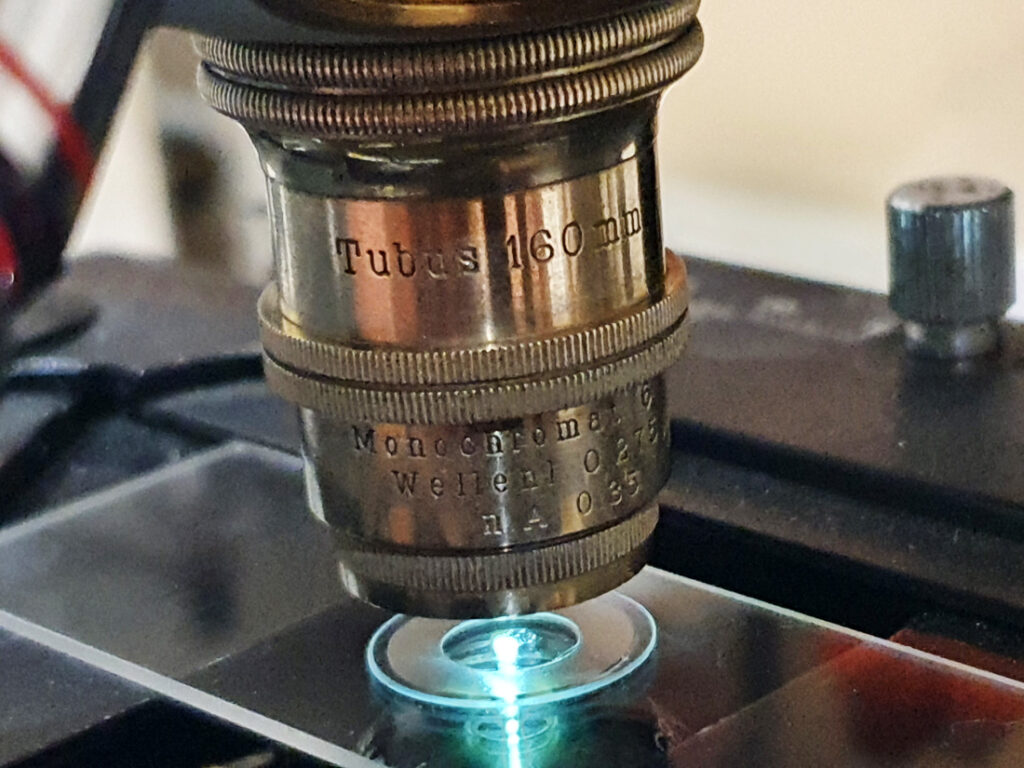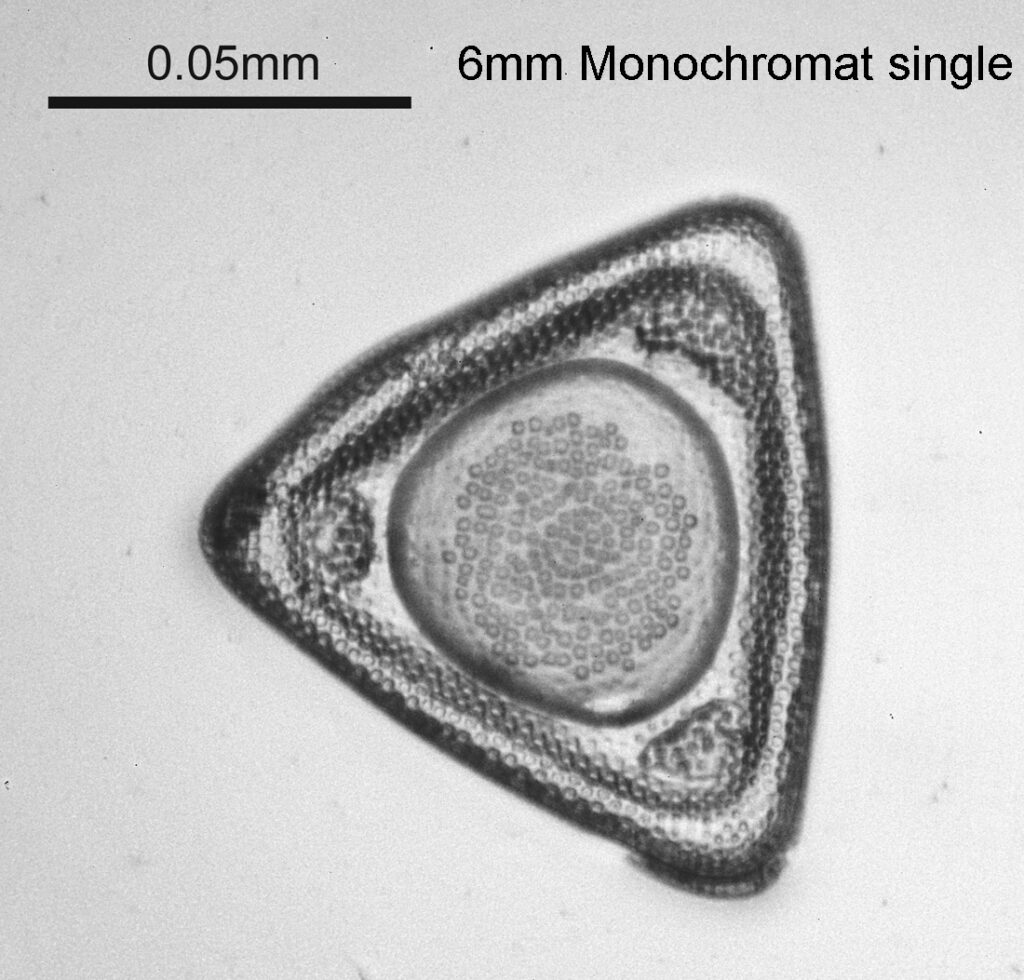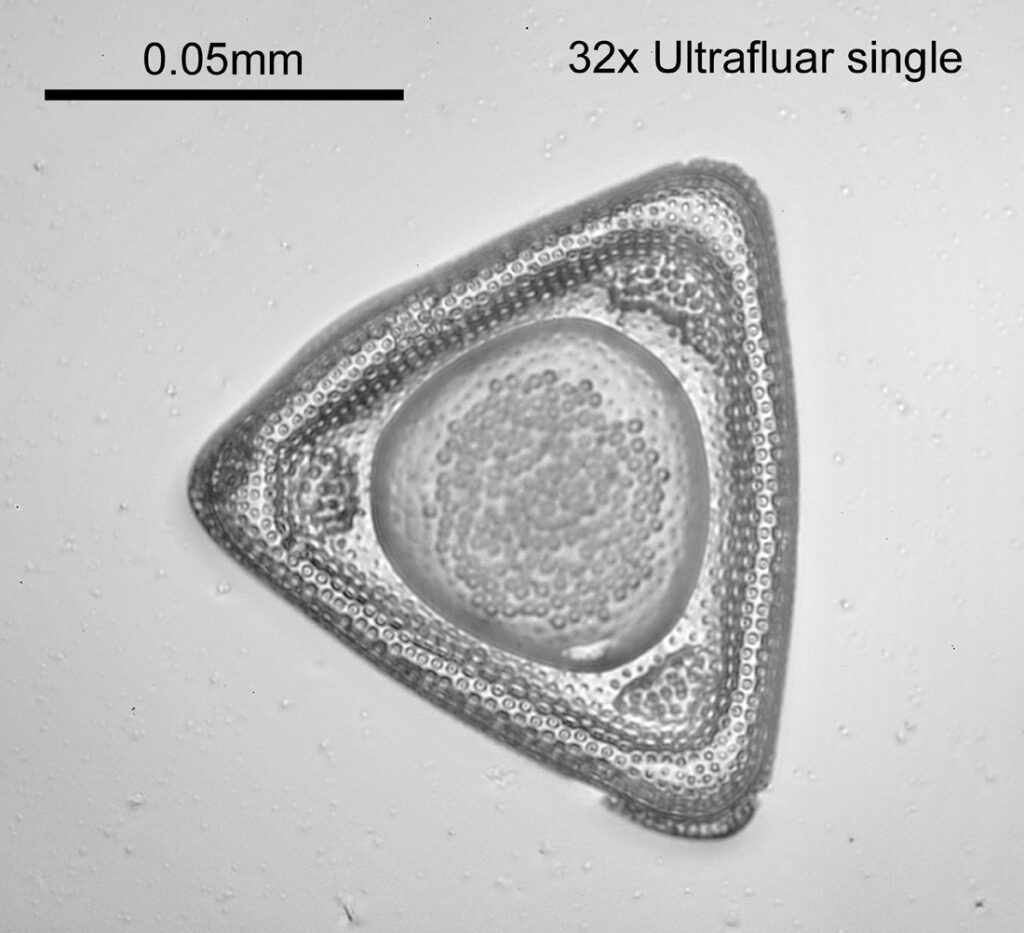Time for a bit of historical microscopy today. I’ve previously written about the Zeiss Monochromat objectives – quartz objectives originally produced in the early 1900s and designed to be used at 257nm or 275nm (see here). Now the microscope is up and running for UV work, I thought I would try out one of these historical pieces and see what type of image it can produce.
The objective of choice was a 6mm NA 0.35 Zeiss Monochromat designed for 160mm tube length and for imaging using 275nm light from a Cadmium arc source. The objective is shown below.

This objective is made from quartz lens elements and has an RMS thread for mounting it. It is also designed for 160mm tube length microscopes which means it is ideal for use on my modified Olympus BHB. Here it is mounted up and in use for imaging a diatom slide.

What about the image quality? To test this I did a single picture of a diatom at 313nm with it and compared it with an image produced by a 32x NA 0.4 Zeiss Ultrafluar which is what I use for my UV imaging research. Firstly with with the 6mm NA 0.35 Zeiss Monochromat.

And now a comparison shot with the 32x NA 0.4 Zeiss Ultrafluar at 313nm.

The 6mm Monochromat had almost exactly the same field of view as the 32x objective. It produced a usable image at 313nm, although was not as sharp as the Ultrafluar. This is not a huge surprise – the Monochromat has only quartz elements (the Ultrafluar is quartz and calcium fluoride), it has a slightly lower NA, and is also being used at a wavelength that it wasn’t designed for. It is also a much older design and construction. The Monochromat also had a huge focus shift compare to visible light which the Ultrafluar does not. Again, this is not unexpected, but must have made working with it in the days of film challenging to say the least.
Overall, it was amazing to use such a historical piece in the manner in which it was originally designed for (bearing in mind the wavelength used wasn’t what it is specified for). Over 100 years later and it is still capable of producing images. Thanks for reading, and if you’d like to know more about this or any other aspects of my work, I can be reached here.
